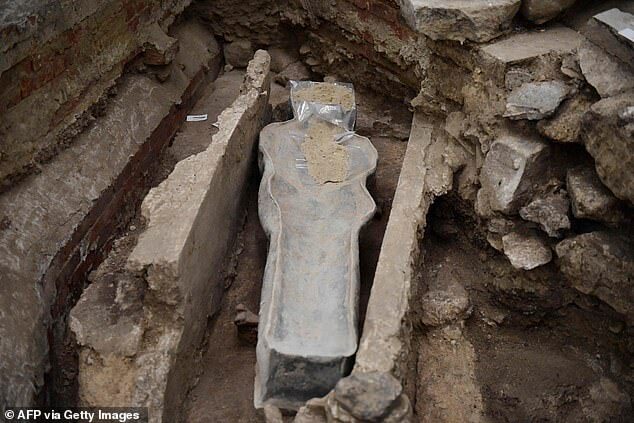
The lead coffins were uncovered during the reconstruction work of the Paris cathedral in 2022 following a 2019 fire that nearly destroyed the structure.
Scientists have now determined the well-preserved skeletal remains of a high priest and a young nobleman.
The young man is unknown, but the priest's coffin features an identification plate with the name Antoine de la Porte and his death date, December 24. This man lived to the age of 83.
Much of the UNESCO World Heritage landmark building was devastated during the blaze, but firefighters saved Notre Dame's spectacular Gothic facade and two landmark towers from being destroyed. Officials have set 2024 as when reconstruction will be complete.
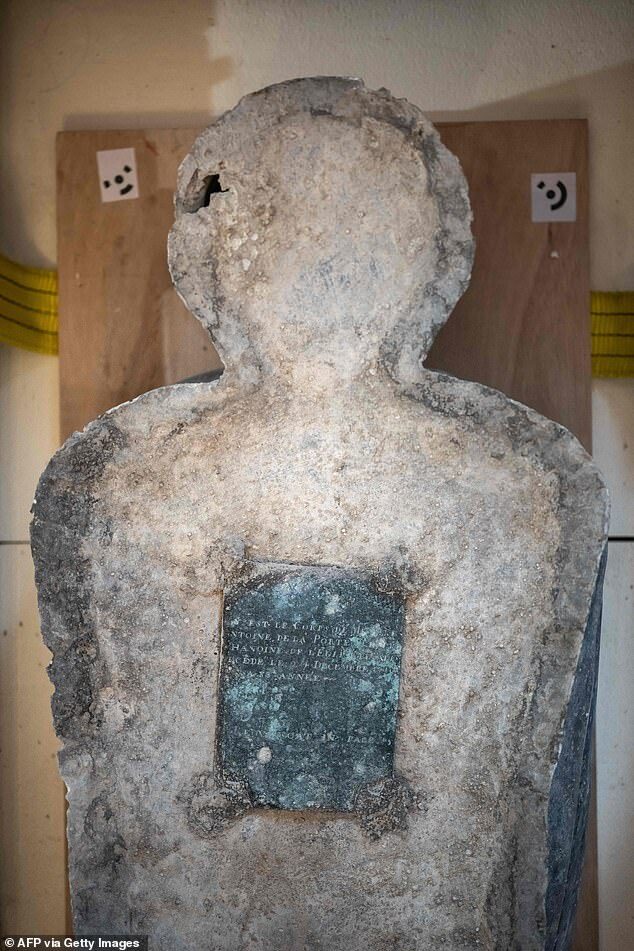
'Burials in cathedrals are practiced throughout the medieval and modern period, the most sought-after places being near the choir,' researchers with the University of Toulouse said in the announcement.
Two years after it was ravaged by a raging inferno, the cathedral of Notre Dame has been virtually revived in beautiful three-dimensional images that will be used to help painstakingly resurrect the iconic building.'Burial in a lead coffin is reserved for an elite.'
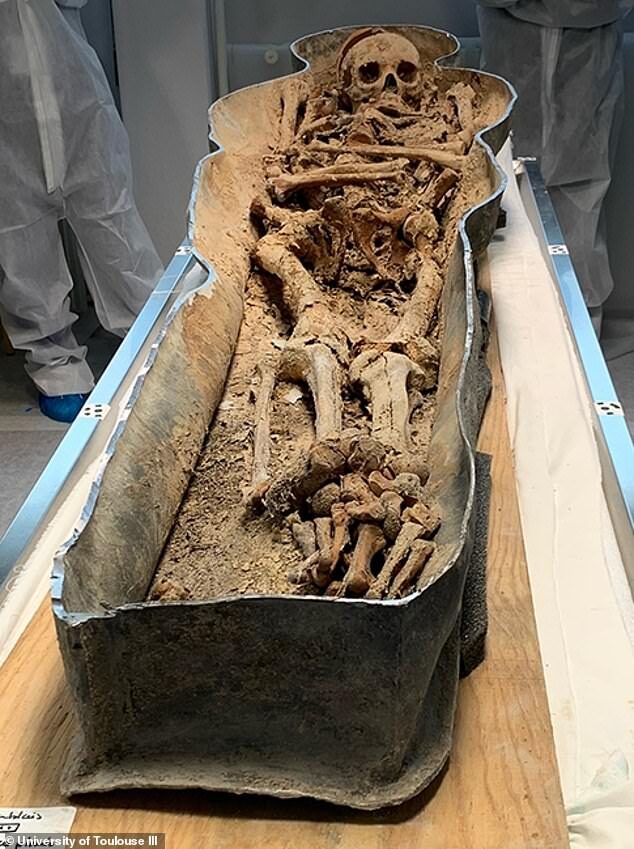
'The two coffins are very different: they have neither the same form, nor the same method of assembly, nor the same alloy, nor the same age (they belonged to distinct archaeological layers),' the team stated.
The high priest, nicknamed 'jubilee canon,' provided financial support to the redevelopment of the enclosure of the choir of Notre Dame in fulfillment of the Vow of Louis XIII.
He was also buried surrounded by the remains linked to the destruction of the medieval rood screen.
Comment: Wiki:
The rood screen (also choir screen, chancel screen, or jubé) is a common feature in late medieval church architecture. It is typically an ornate partition between the chancel and nave, of more or less open tracery constructed of wood, stone, or wrought iron.
Archaeologists identified three medals on Canon's coffin, which was not intact when it was pulled from the dirt.
No organic tissue was left on the bones, but the remains were still well-preserved - including his hair and beard.
According to The British Museum, a painting by Jean Jouvenet, commissioned around 1708, pays homage to him for lending money to Louis XIII.
It shows a mass being held inside the cathedral.
The tomb of the unknown nobleman, also made of lead, was molded to form the man's body, which also did not feature much organic tissue.
When archaeologists first uncovered the coffins, they deployed an endoscopic camera inside this sarcophagus that spotted leaves and what was likely a wreath of flowers laid on his head before the burial.
There was a brass plate of the priest's coffin that reads: "THIS IS THE BODY OF MESSIRE ANTOINE OF THE CANON PORTE OF THE CHURCH [word erased] DEATH DECEMBER 24, 1710 IN HIS 83RD YEAR. RESQUIETCAT IN PACE".
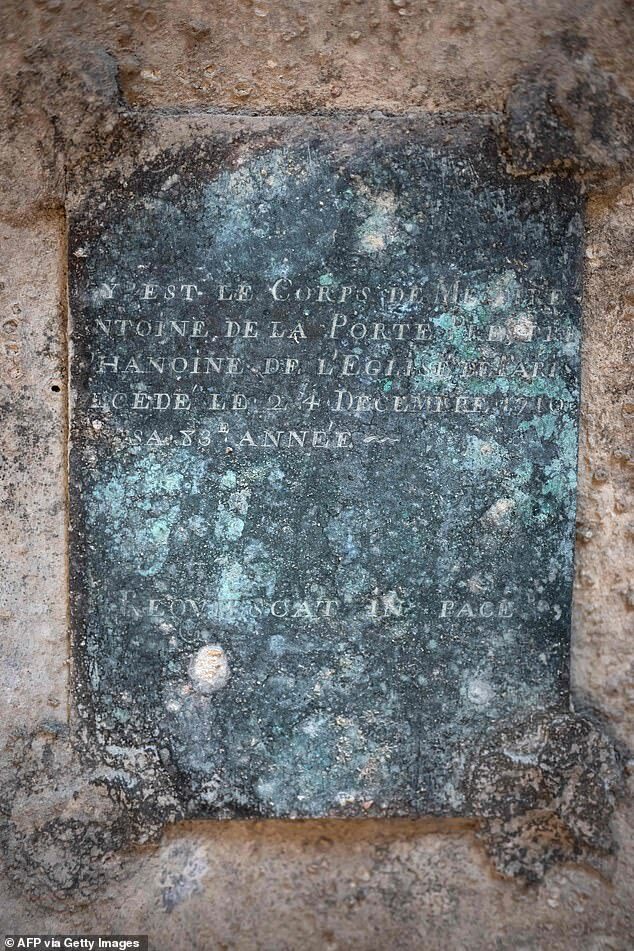
The examination of the bones revealed he was between 25 and 40 years of at death and spent much of his early life riding horses. There are several markings associated with this activity on his upper limbs.
Eric Crubézy, professor of biological anthropology at the University of Toulouse III, who oversaw the coffin opening last month, told Live Science that this man likely died of chronic meningitis due to tuberculosis.
The team nicknamed the man 'Le Cavalier', and the current analysis of his remains suggests he died between the 14th and 18th centuries.
After the analyses, the scientists will meet again to pool their results and discuss the overall research. The first results are expected in the first half of 2023.
On April 15, 2019, millions worldwide watched in horror as firefighters battled through the night to save the cathedral as a fire tore through its roof and toppled the steeple.
The 300-foot-tall Gothic spire collapsed into the embers early in the blaze to pained cries of 'Oh my God' from locals transfixed by the unfolding scene.
The blaze broke out just before 7 pm local time in a roof area undergoing renovations.
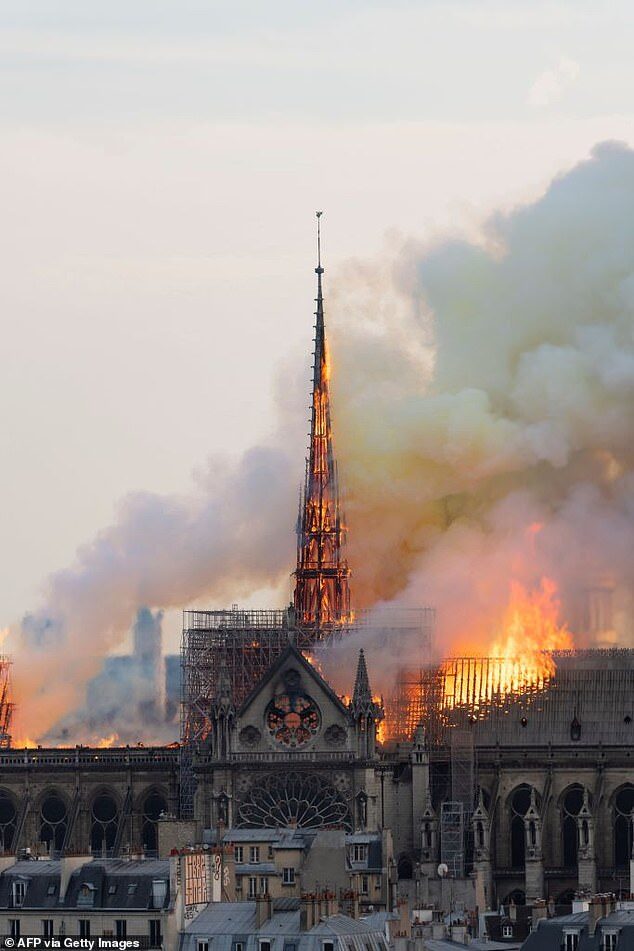
Comment: More on the suspicious nature of the fire, here: Chief architect of Notre Dame: 'We installed new detection system in 2010, and completely rewired the cathedral, so the fire wasn't caused by electrical short-circuit'
'Notre-Dame survived all the wars, all the bombardments. We never thought it could burn. I feel incredibly sad and empty,' Stephane Seigneurie, a consultant who joined other shocked onlookers in a solemn rendition of 'Ave Maria' as they watched the fire from a nearby bridge.
In September 2021, the French government announced the Cathedral was finally stable and secure enough to start work to rebuild it.
And months later, the mysterious coffins were uncovered, which archaeologists hope can provide more information about the ancient cathedral.
Our Lady of Paris: The 850-year-old cathedral that survived being sacked in the Revolution to become Europe's most-visited historical monument
Intrigued by tales of Quasimodo, fascinated by the gargoyles, or on a pilgrimage to see the Crown of Thorns said to have rested on Jesus' head on the Cross, more than 13 million people each year flock to see Europe's most popular historic monument.
The 12th century Catholic cathedral is a masterpiece of French Gothic design, with a cavernous vaulted ceiling and some of the largest rose windows on the continent.
It is the seat of the Archdiocese of Paris and its 69m-tall towers were the tallest structures in Paris until the completion of the Eiffel Tower in 1889.
It survived a partial sacking by 16th century zealots and the destruction of many of its treasures during the atheist French Revolution but remains one of the greatest churches in the world and was the scene of Emperor Napoleon's coronation in 1804.
The foundation stone was laid in front of Pope Alexander III in 1163, with building work on the initial structure completed in 1260.
The roof of the nave was constructed with a new technology: the rib vault. The roof of the nave was supported by crossed ribs which divided each vault into compartments, and the use of four-part rather than six-part rib vaults meant the roofs were stronger and could be higher.
After the original structure was completed in the mid 13th century - following the consecration of the High altar in 1182 - flying buttresses had been invented, and were added to spread the weight of the mighty vault.
The original spire was constructed in the 13th century, probably between 1220 and 1230. It was battered, weakened and bent by the wind over five centuries, and finally was removed in 1786.
During a 19th century restoration, following desecration during the Revolution, it was recreated with a new version of oak covered with lead. The entire spire weighed 750 tons.
At the summit of the spire were held three relics; a tiny piece of the Crown of Thorns, located in the treasury of the Cathedral; and relics of Denis and Saint Genevieve, patron saints of Paris. They were placed there in 1935 by the Archibishop Verdier, to protect the congregation from lightning or other harm.
The Crown of Thorns was one of the great relics of medieval Christianity. It was acquired by Louis IX, king of France, in Constantinople in AD 1239 for the price of 135,000 livres - nearly half the annual expenditure of France.
The elaborate reliquary in which just one of the thorns is housed sits in the Cathedral having been moved from the Saint-Chappelle church in Paris. The thorn is mounted on a large sapphire in the centre.
The crown itself is also held in the cathedral, and is usually on view to the public on Good Friday - which comes at the end of this week.During the 1790s with the country in the grip of atheist Revolution the cathedral was desecrated and much of its religious iconography destroyed. It was rededicated to the Cult of Reason and 28 statues of biblical kings - wrongly believed to be French monarchs - were beheaded. Even the great bells were nearly melted down.Notre-Dame de Paris is home to the relic accepted by Catholics the world over cathedral. The holy crown of thorns worn by Jesus Christ during the Passion
Napoleon returned the cathedral to the Catholic Church and was crowned Emperor there in 1804, but by the middle of the 19th century much of the iconic building.
It wasn't until the publication of Victor Hugo's novel - The Hunchback of Notre Dame - in 1831 that public interest in the building resurfaced and repair works began.
A major restoration project was launched in 1845 and took 25 years to be completed.
Architects Jean-Baptiste-Antoine Lassus and Eugène Viollet-le-Duc won the commission.
By 1944 the cathedral was to be damaged again and during the liberation of Paris, stray bullets caused minor damage to the medieval stained glass.
This would be updated with modern designs.
In 1963 France's Culture Minister, André Malraux, ordered the cleaning of the facade of the cathedral, where 800 years worth of soot and grime were removed.
Notre Dame has a crypt, called the Crypte archéologique de l'île de la Cité, where old architectural ruins are stored. They span from the times of the earliest settlement in Paris to present day.
The cathedral has 10 bells, the heaviest bell - known as the boudon and weighing 13 tonnes - is called Emmanuel and has been rung to mark many historical events throughout time.
At the end of the First and Second World Wars the bell was rung to mark the end of the conflicts.
It is also rung to signify poignant events such as French heads of state dying or following horrific events such as the terrorist attack on the Twin Towers in New York in 2001.
The three stained glass rose windows are the most famous features of the cathedral. They were created in the Gothic style between 1225 and 1270.
While most of the original glass is long gone, some remains in the south rose which dates back to the last quarter of the 12th century.
The rest of the windows were restored in the 18th century.
The south rose is made up of 94 medallions which are arranged in four concentric circles.
They portray scenes from the life of Christ and those who knew him - with the inner circle showing the 12 apostles in it 12 medallions.
During the French Revolution rioters set fire to the residence of the archbishop, which was around the side of the cathedral, and the south rose was damaged.
One of the cathedral's first organs was built in 1403 by Friedrich Schambantz but was replaced in the 18th century before being remade using the pipe work from former instruments.
The Cathedral is also home to a Catholic relic said to be a single thorn from the crown of thorns worn by Jesus on the cross.
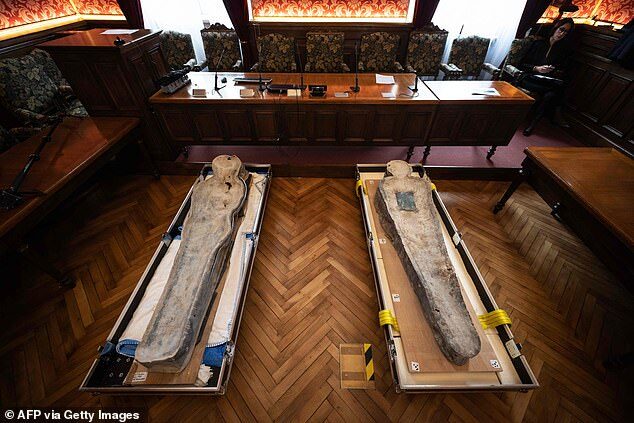
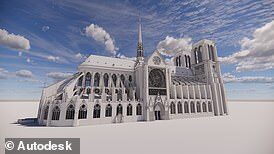
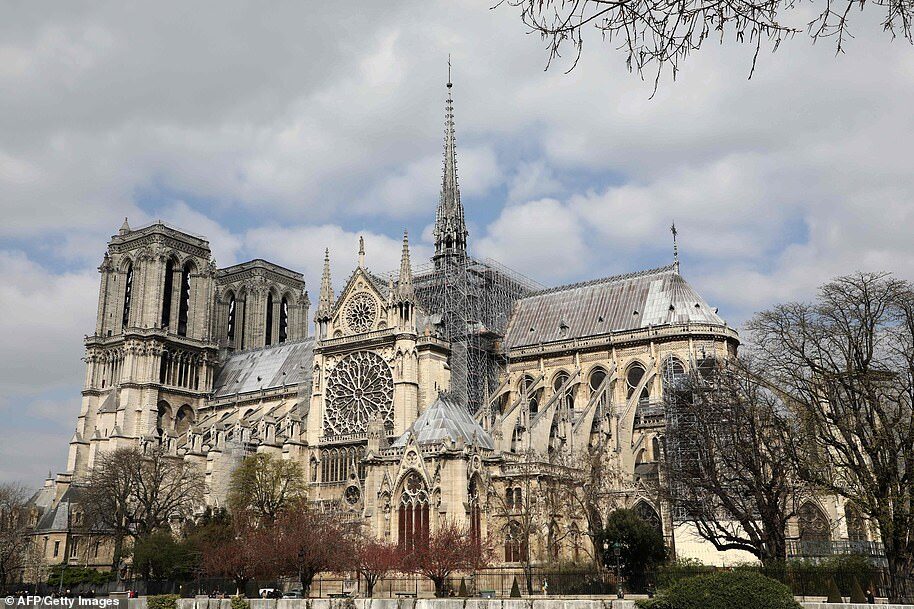
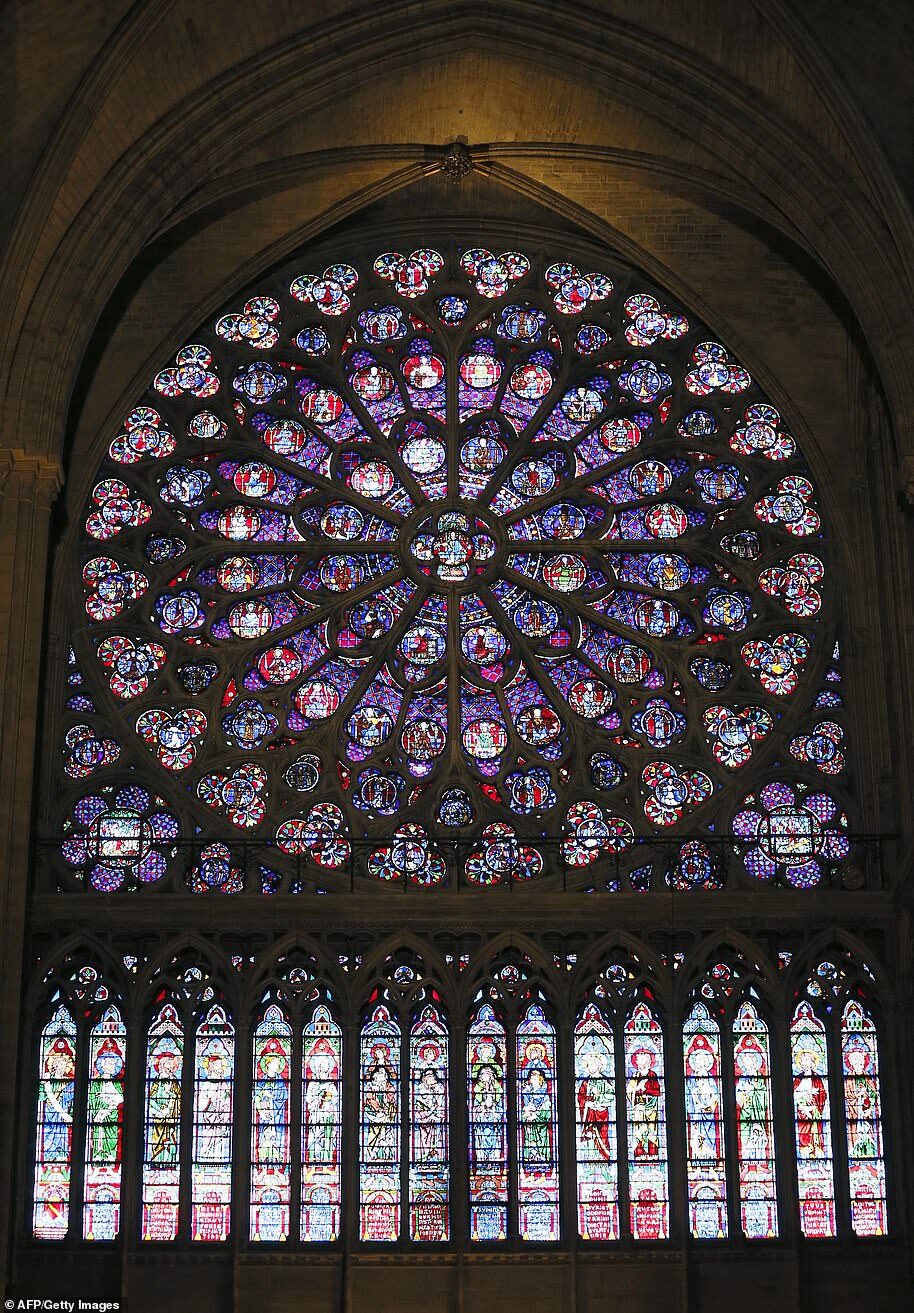
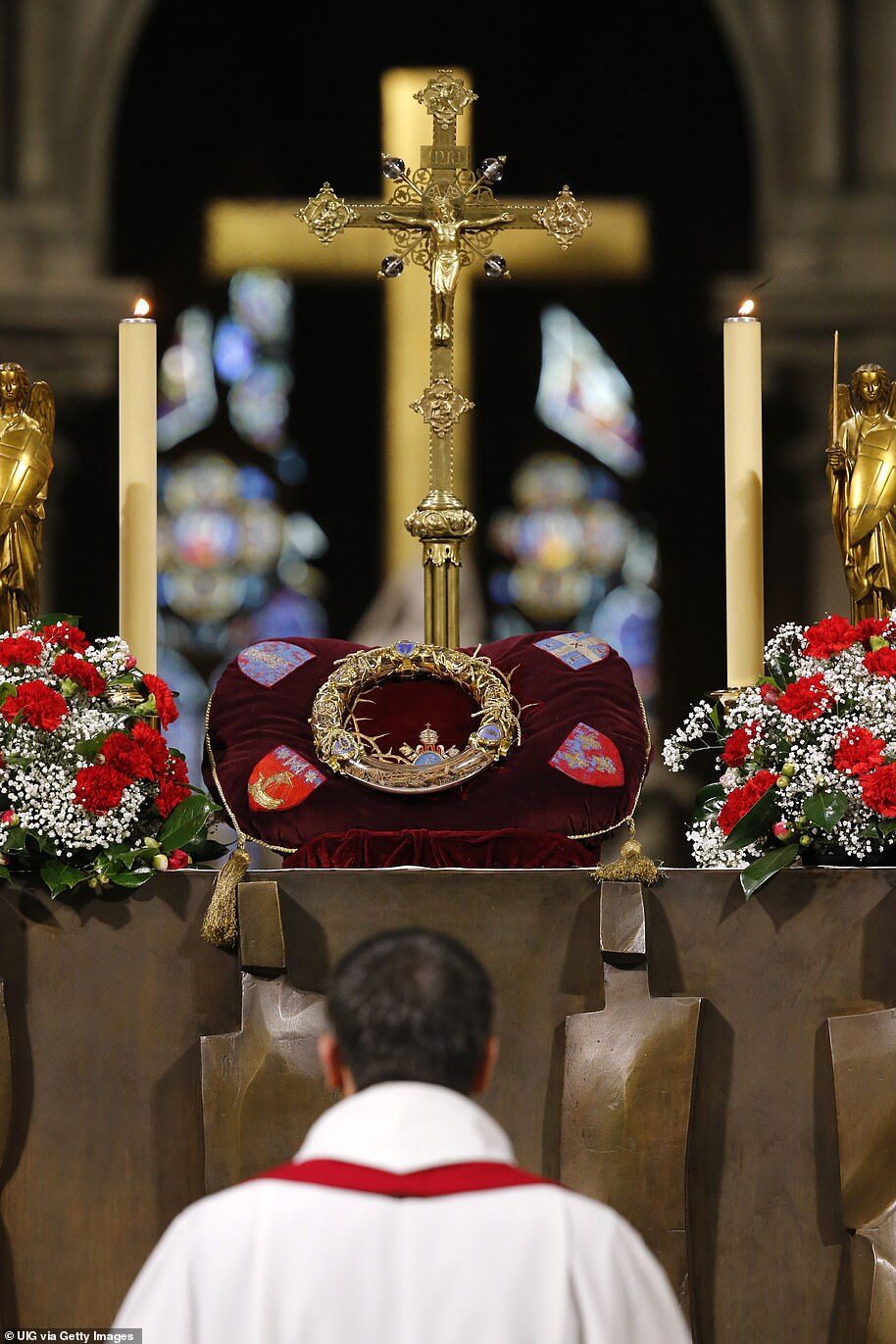



Comment: See also:
- Secrets of the exceptional diatretic vase revealed, recently discovered at 4th century Paleo-Christian necropolis in Autun, France
- "Once in a lifetime" 1300-year-old gemstone necklace discovered in England may have belonged to high status Christian woman
- Sheela-na-gigs: The naked women adorning Britain's churches
- Ireland's high crosses: Medieval religion, art and engineering
- Strasbourg Cathedral's secreted stained glass astronomical clock illuminates each equinox
- 1,400 years ago Bamburgh Castle was center of 'Northumbrian enlightenment', hosting visitors from as far as North Africa
And check out SOTT radio's: